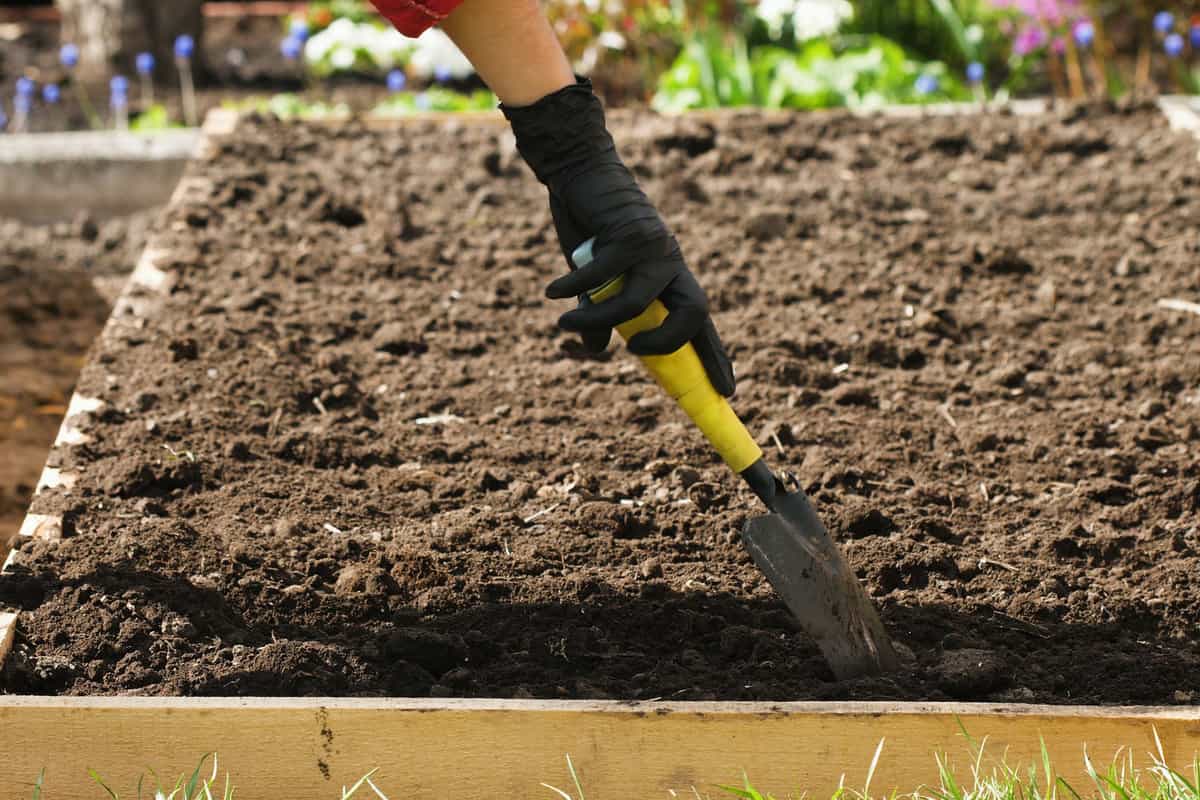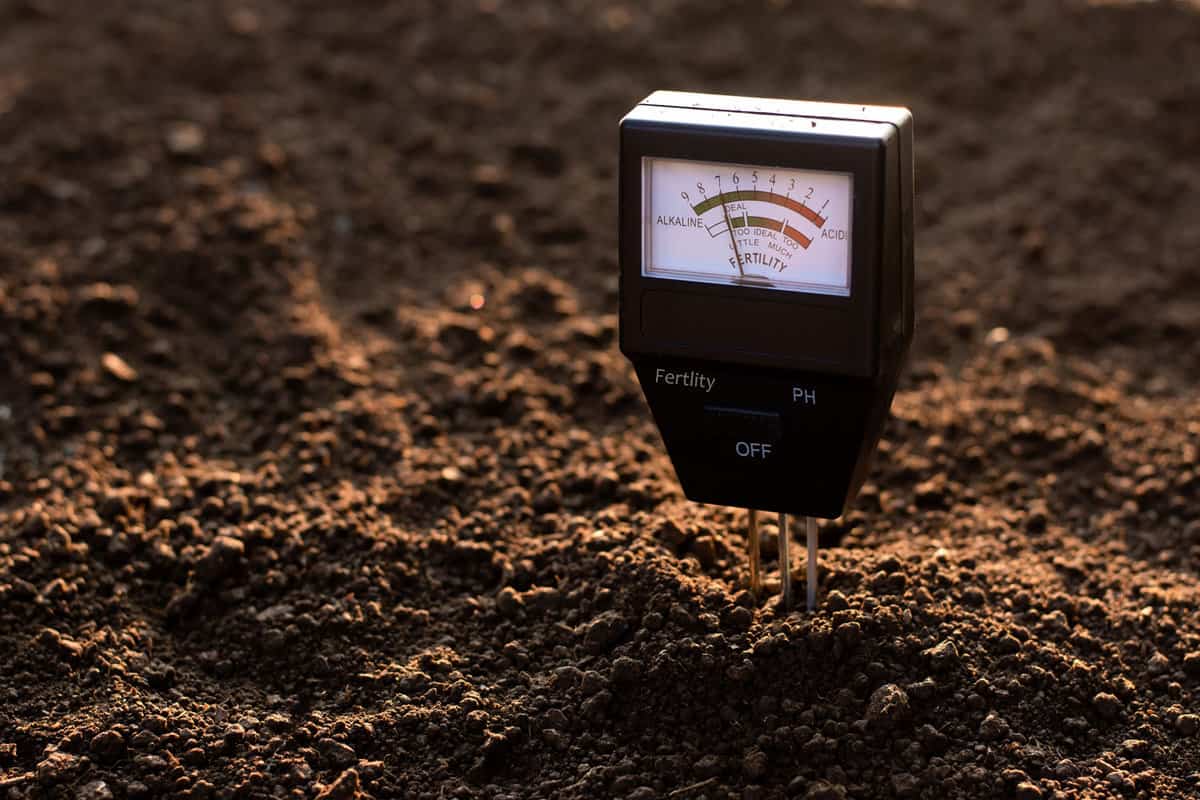Are you ready to take your garden to the next level?
Fall is the perfect time to prepare your soil for the growing season.

From compost bins to cover crops, plenty of brilliant hacks help you get the most out of your garden.
This blog will explore the best ways to prepare your soil for the fall and prevent frost damage.
These hacks will make you fall in love with preparing your soil for the fall and preventing frost damage.
So, roll up your sleeves and get your hands dirty (in a good way).
![Frozen ground with hoarfrost on a farm field. Focus on frozen soil. - 10 Brilliant Hacks To Prepare Your Soil For The Fall [And Prevent Frost Damage]](https://gardentabs.com/wp-content/uploads/2023/09/10-Brilliant-Hacks-To-Prepare-Your-Soil-For-The-Fall-And-Prevent-Frost-Damage-1-1.png)
Understanding Your Soil
Preparing your soil for fall planting is essential for a successful garden. But before you start, you need to understand your soil.
Knowing your soil type and pH level will help you determine which plants will thrive in your garden and what amendments you need to add.
Soil Types
There are three main soil types: sandy, clay, and loam. Sandy soil drains quickly, but it doesn't hold nutrients well.

Clay soil retains moisture but can become compacted, making it difficult for roots to grow.
Loam soil is a mixture of sand, silt, and clay and is ideal for most plants.
To determine your soil type, squeeze a handful of soil. If it crumbles easily, it's sandy soil. If it forms a ball that doesn't break apart, it's clay soil. If it forms a ball but breaks apart easily, it's loam soil.
Soil pH Levels
Soil pH is a measure of how acidic or alkaline your soil is. Most plants prefer slightly acidic soil with a pH between 6.0 and 7.0.
If your soil is too acidic, add lime to raise the pH. You can add sulfur to lower the pH if it's too alkaline.

You can buy a soil test kit or send a sample to a lab to test your soil pH. Trying your soil every few years is a good idea to ensure you provide the right conditions for your plants.
Related Post: Why Soil pH Matters: Ensuring Your Garden's Health and Success
Importance of Fall Soil Preparation
Preparing your soil for the fall is essential for your garden to thrive next spring.
By preparing your soil now, you can avoid frost damage and give your plants the nutrients they need to grow strong and healthy.
Avoiding Frost Damage
One of the most significant risks to your garden in the fall is frost damage.
When the temperature drops, the water in your soil can freeze and expand, damaging the roots of your plants.
One way to avoid frost damage is to add a layer of organic material, such as compost or shredded leaves, to your soil. This will help insulate your ground and protect your plants from the cold.
You can also cover your garden beds with a layer of mulch to help retain moisture and regulate the temperature of your soil.
Boosting Spring Growth
Preparing your soil in the fall can also help boost the growth of your plants in the spring.
To boost spring growth, add a layer of fertilizer to your soil. You can also plant cover crops, such as clover or rye, to help add nutrients to your ground and improve its structure.
Another option is to grow fall vegetables, such as broccoli or kale, which can help break up compacted soil and add organic matter.
Related: Start Your Fall Garden Today: What to Plant Now
10 Brilliant Hacks to Prepare Your Soil for Fall
Fall is a critical time for gardeners to prepare their soil for winter. Here are ten brilliant hacks to prepare your soil for fall:
Hack 1: Mulching
Mulching is one of the easiest and most effective ways to prepare your soil for fall. It helps retain moisture, suppress weeds, and regulate soil temperature.
Apply a layer of organic mulch, such as leaves or straw, to your garden beds to protect your soil from the harsh winter weather.
Hack 2: Adding Compost
Adding compost to your soil in the fall is a great way to improve soil structure and fertility. Compost is rich in nutrients and organic matter, which can help support healthy plant growth.
Put a layer of compost on your garden beds and work it into the soil to improve soil health.
Hack 3: Planting Cover Crops
Planting cover crops, such as clover or rye, is an excellent way to protect your soil from erosion and improve soil health.
Cover crops help add organic matter to the soil and prevent nutrient loss—plant cover crops in the fall and till them into the ground in the spring for maximum benefit.
DIY Frost Covers
Protect your plants from frost damage by creating DIY frost covers.
Use blankets or sheets to cover your plants at night and remove them during the day. This will help regulate temperature and protect your plants from the harsh winter weather.
Hack 4: Applying Organic Fertilizers
Applying organic fertilizers, such as bone meal or fish emulsion, in the fall can help support healthy plant growth in the spring.
Organic fertilizers are slow-release and provide nutrients to your soil over time. Apply organic fertilizers to your garden beds in the fall to promote healthy soil and plant growth.
Hack 5: Soil Turning
Turning your soil in the fall can help improve soil structure and aeration. Use a garden fork or tiller to loosen the dirt and promote healthy root growth.
This will help your plants absorb nutrients more efficiently and improve soil health.
Hack 6: Using Raised Beds
Using raised beds is an excellent way to protect soil from erosion and improve soil health.
Raised beds help promote healthy drainage and prevent soil compaction. Build raised beds in the fall and fill them with nutrient-rich soil for healthy plant growth.
Hack 7: Implementing Crop Rotation
Implementing crop rotation is an effective way to prevent soil-borne diseases and pests. Rotate your crops each year to avoid the buildup of harmful organisms in the soil. This will help promote healthy soil and plant growth.
Hack 8: Introducing Beneficial Insects
Introducing beneficial insects, such as ladybugs or praying mantises, to your garden can help control harmful pests and promote healthy plant growth.
Beneficial insects help control pest populations naturally and reduce the need for harmful pesticides.
Hack 9: Testing Soil Regularly
Testing your soil regularly can help you determine its pH level and nutrient content.
Use a soil test kit to test your soil in the fall and adjust its pH and nutrient content accordingly. This will help promote healthy soil and plant growth.
Hack 10: Proper Watering Techniques
Proper watering techniques are essential to maintaining healthy soil and plant growth. Water your plants deeply and infrequently to promote healthy root growth and prevent soil erosion.
Use a watering can or drip irrigation system to apply water directly to the soil and to avoid water waste.
Related: When To Apply Fall Fertilizer [And How To]
Final Words
Congratulations! You now know ten brilliant hacks to prepare your soil for the fall and prevent frost damage.
By following these tips, you can ensure that your garden thrives next season.
Don't be afraid to experiment and try new things. Gardening is a learning process, and there's always room for improvement.
So get out there and prepare your soil for a successful fall garden!
